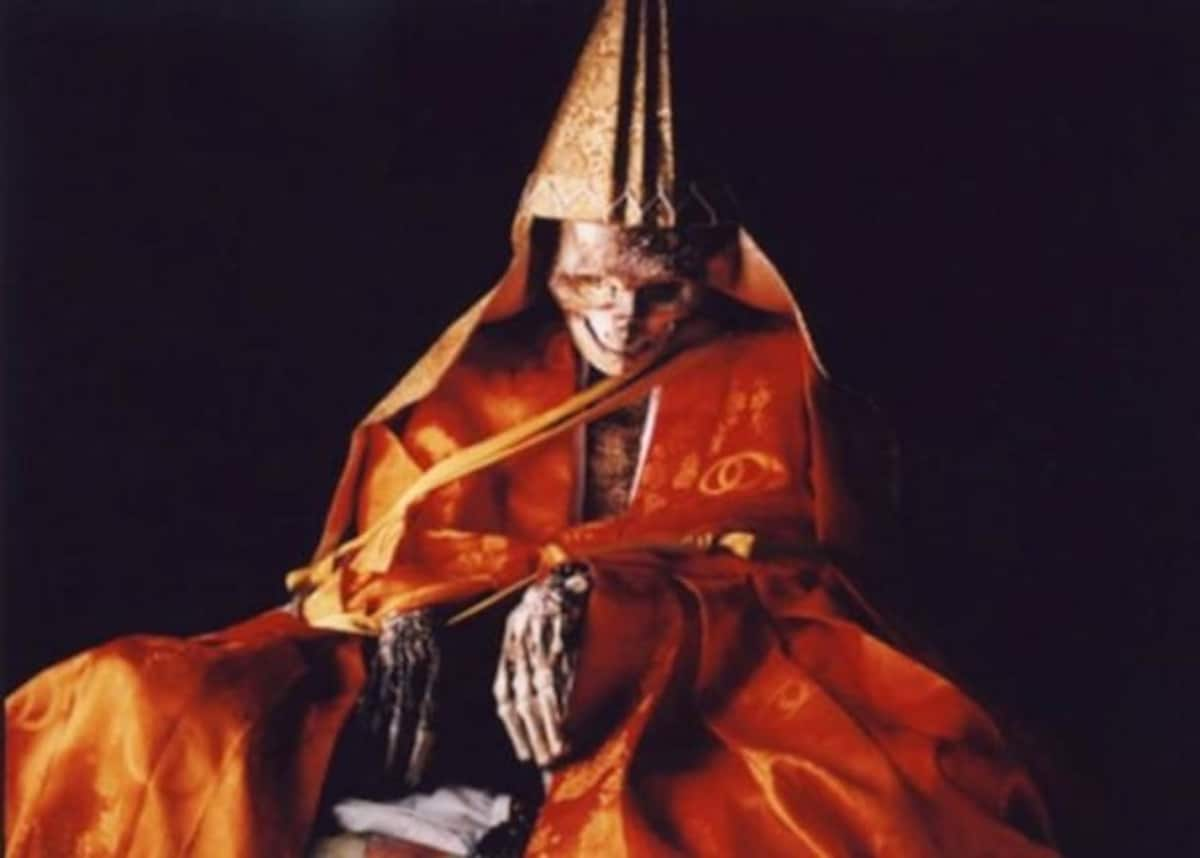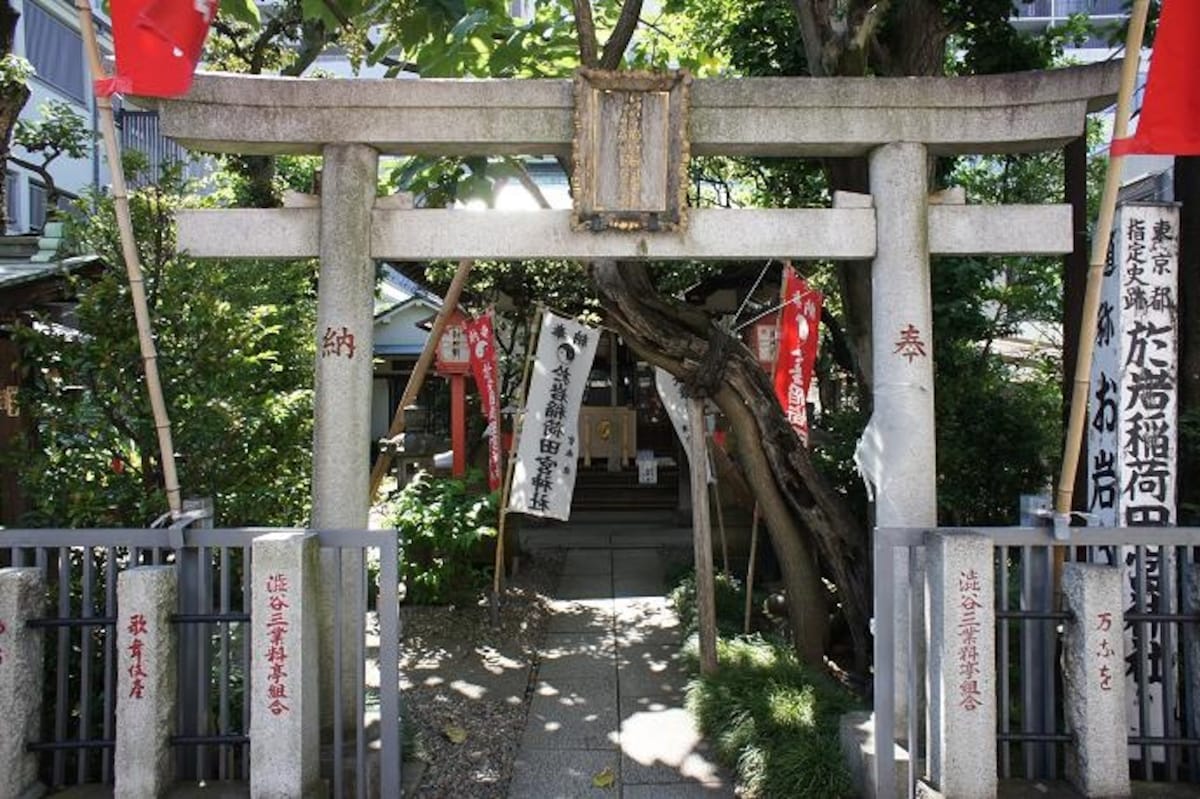Japan's 8 Creepiest Shrines & Temples
Like all places of worship, most temples and shrines will bring you a sense of harmony and peace. However, just as it happens in other religious traditions, some also come with their share of creepy stories. Here at All About Japan we selected some of the most famous, mysterious and creepy stories surrounding Japanese temples and shrines.
By Diletta Fabiani4. Oiwa Inari Tamiya Shrine (Tokyo)
The story of Oiwa Inari Shrine is also one of the best-known ghost stories in Japan. The legend goes that Oiwa was a very pure and faithful woman, married to a terrible man named Tamiya Iemon, who killed her in order to marry a richer woman. While the accounts on how he killed her vary, they all include poisoning with terrible consequences to her looks. Obviously, Oiwa wouldn’t be very keen on this whole new marriage thing and she proceeded to ruin his wedding, making him kill his new wife and her family by making them look like her dead self, and finally killed him too. The shrine was built to try to placate Oiwa’s angry spirit, and it still rests south of Yotsuya-sanchome Station in Tokyo.
While this is the legend, many say that the whole story was made up by Tsuruya Nanboku IV, a Kabuki playwright of the late Edo Period (1603-1868), in his famous production entitled Tokaido Yotsuya Kaidan. In reality, Oiwa was Tamiya Iemon's daughter, and she married his adopted son, Isaemon. They were quite happy and successful together, and while she was enshrined, there’s no haunting going on in this place.
3. Okiku Doll at Mannenji Temple (Hokkaido)
Dolls can undoubtedly be creepy, as any horror movie aficionado will tell you. Could Japan do without its own creepy doll? Meet Okiku, residing at Mannenji Temple in Iwamizawa City, just northeast of Sapporo in Hokkaido. This 40-centimeter (16-in) doll sits in a box dressed in a kimono, looking as inconspicuous as it can be.
There are various versions of how the doll arrived there, but they all include a beloved previous owner—a girl named Kiku or Okiku—who died, and a family that left it at the temple for safekeeping. The peculiar feature of the doll is that when it was first brought to the temple, her hair was quite short, and has grown over time to a grand total of 25 centimeters (10 in). Yep, the doll’s hair grows.
2. Bloody Temple Ceilings (Kyoto)
Kyoto is a favorite for anybody interested in Japanese history. But imagine you're walking in a quiet temple in Kyoto, you look up and you see… a bloody footprint. On the ceiling.
This is not only possible, but a reality, and it has an interesting backstory to it.
Bloody ceilings can be found at different locations in Kyoto: Yogen-in Temple near Sanjusangendo, Genko-an temple north of Bukkyo University and Hosen-in Temple in the northern village of Ohara. All these places have a fair share of bloody footprints and hand prints on their walls and ceilings, and they also have another thing in common: wood from Fushimi Castle.
Fushimi Castle was completed in 1594, and in 1600 it was the location of a gruesome battle between Torii Mototada, a follower of the feudal lord Tokugawa Ieyasu, and Ishida Mitsunari, follower of his recently deceased benefactor, Toyotomi Hideyoshi. Tokugawa Ieyasu was the first shogun of the Tokugawa Shogunate that ruled Japan from 1603 until the Meji Restoration in 1868. To get there, he had to prove his military superiority over the other feudal lords who wanted Hideyoshi's son, Hideyori, to take control of recently unified Japan after Hideyoshi's death.
The castle became the theater of an 11-day-long siege that ended with the capitulation of the castle and nearly 2000 deaths. The last Tokugawa men left standing all committed seppuku (ritual suicide), soaking the floors in blood, which proved impossible to remove. The third shogun of the Edo Period, who had no use for the castle, decided to dismantle it and use the wood for other buildings—and that’s how bloody footprints appeared on Kyoto’s temple ceilings.
1. Self-Mummified Monks (Yamagata)

http://www.ancient-origins.net/news-history-ancient-traditions/sokushinbutsu-and-ancient-japanese-monks-mummified-to-death-012938
Ever heard of the practice of self-mummification? If you want the gory details, Wikipedia is your friend. To put it briefly, the Sokushinbutsu practice spread among some schools of Japan's Buddhist monks between the 11th and 19th century, most famously around the the three sacred mountains of Dewa Sanzan in Yamagata Prefecture. It consisted of three 1,000-day regimens of progressive austerity that included starvation, meditation and finally being being buried alive, which eventually led to death and, if performed correctly, mummification. The practice was seen as a further step towards enlightenment, and monks who succeeded were respected and worshiped as living Buddhas.
While the practice has since been deemed illegal, you can still find 16 of these mummified monks in various Japanese temples, eight of them in Yamagata. One of the most famous mummies is of the monk Daijuku Bosatsu Shinnyokai Shonin (1687-1783, pictured above) at Dainichibo Temple, located at the foot of Mount Yudono. Others can be found in small Yamagata cities such as Nangaku-ji Temple in Tsuruoka and Kaikoku-ji Temple in Sakata.







